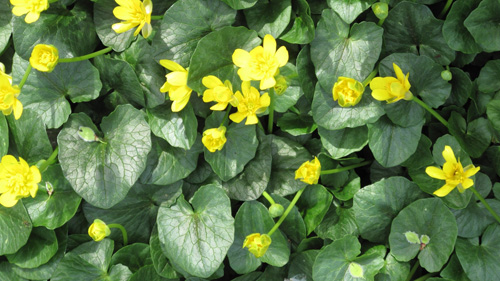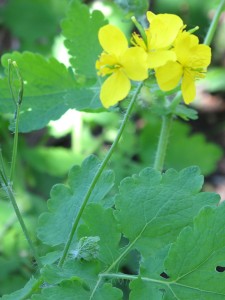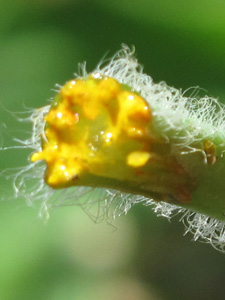Lesser Celandine
A colony of lesser celandine (Ranunculus ficaria) growing in the orchard below the south wall of Bonnefont garden.
The shining yellow flowers of lesser celandine star the grounds below Bonnefont garden in March and April, but the blossoms and the heart-shaped leaves of this spring ephemeral will disappear altogether by summer. The tuberous roots, which lie just beneath the surface of the soil, will remain dormant until the following spring. This invasive medieval species is not grown within the walls of The Cloisters, but has long been at home throughout the northeastern United States. (See the Ranunculus ficaria page of the Invasive Plant Atlas of New England website.)



